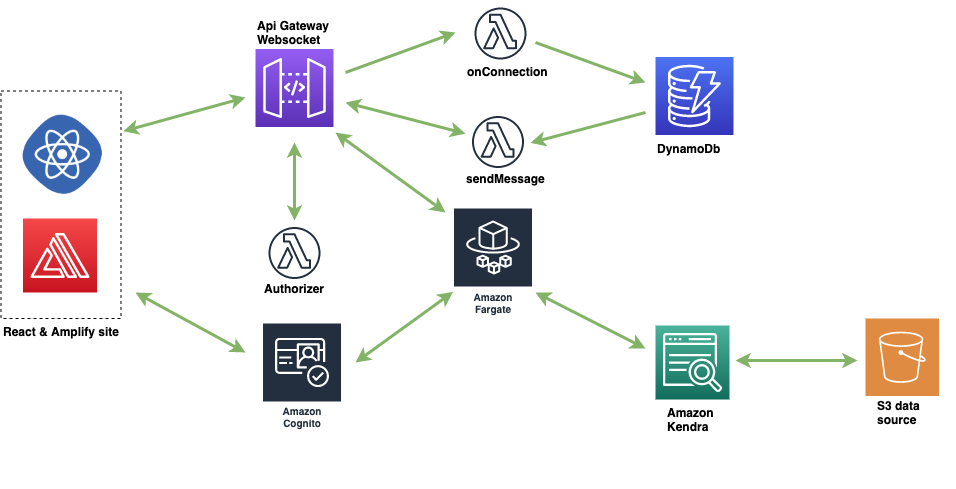
Amazon Lex builds a language model based on utterance phrases provided by us, which then invoke the required intent. If we have more than one intent, we need to provide different utterances for them. Utterances: An utterance is a text phrase that invokes intent.In our case, our goal is to purchase books. Intent: Intent represents a goal, needed to be achieved by the bot’s user.Lex-Related Terminologiesīot: It consists of all the components related to a conversation, which includes: To understand the terms correctly, let’s consider an e-commerce bot that supports conversations involving the purchase of books. I’ve put together this quick-start tutorial using which you can start building Lex chat-bots.
#Chatbot aws code#
After publishing the bot, Lex will process the text or voice conversations and execute the code to send responses. The phrases provided by the developer are used to build the natural language model. Now, developers just need to design conversations according to their requirements in Lex console. So, now there is no need to spend time in setting up and managing the infrastructure for your bots. Amazon now provides it as a service that allows developers to take advantage of the same features used by Amazon Alexa. It provides deep learning-powered natural-language understanding along with automatic speech recognition.

Lex is effectively the technology used by Alexa, Amazon’s voice-activated virtual assistant which lets people control things with voice commands such as playing music, setting alarm, ordering groceries, etc. When the bot has all the checked slots, check if movie_id has existed in the database.Amazon announced “ Amazon Lex” in December 2016 and since then we’ve been using it to build bots for our customers. Implemented for basics validation for mobile number The number of ticket bookings is bound from 1 to maximum booking up to 10 Users can book up to 1-month tickets in advance from today's sales TheaterName slot should be in DynamoDB associated with MovieName slot (movie table) MovieName slot should be in a pre-defined list ( in the real application it will call a backend server and get an available list of movies) It performs the following user inputs validation. If entered data is invalid in 3 rounds of input, end the session. Max invalid data entering per intent is 2 (customizable). If any slot has data that doesn't exist in the database, it will send an Elicit Slot Action Type and ask the user to input data again. Otherwise, it will ask for confirmation then end the session. If the validation process sends a success message, the chatbot will ask the next question to fulfill the remaining slots. Perform further initialization, validation and fulfillment in lex.
#Chatbot aws movie#
My Booking Movie Ticket Boot has 3 intents as listed below BookTicketsīuit-in Lex intent Lambda Functionex (Chatbot)

It can be embedded in any website using a js snippet or server as a whole application Amazon Lex is a service for building conversational interfaces into any application using voice and text.


 0 kommentar(er)
0 kommentar(er)
